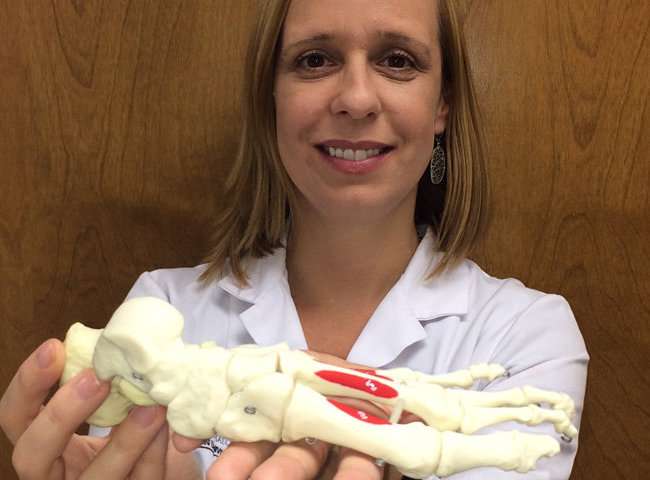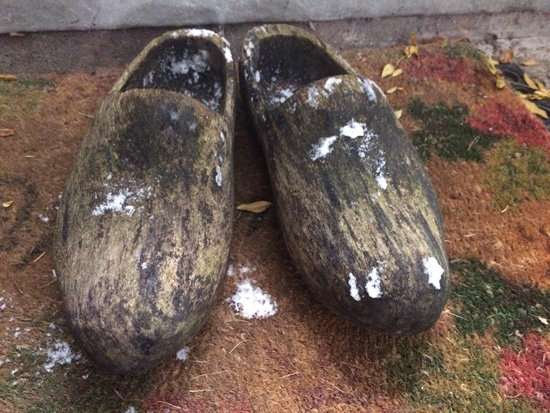'Wooden shoe' rather wear sneakers? Research shows long-lasting issues from inflexible clogs

Bio-archeologists have discovered a pattern of unusual bone chips in the feet of clog-wearing 19th-Century Dutch farmers—injuries that offer clues to the damage we may unwittingly be causing to our own feet.
The unexpected prevalence of damage in the farmers' foot bones is more than just an historical curiosity; researchers believe their findings provide new insights into how some micro-injuries happen.
"What we choose to wear on our feet plays a big role in the injuries and trauma our feet can sustain," said co-author Andrea Waters-Rist, an associate professor of anthropology at Western University.
She has been co-leading a team from Leiden University in examining bones excavated during the relocation of a church cemetery in the tiny village of Middenbeemster, near Amsterdam. Using osteobiography and paleopathology methods as well as stable isotope analysis and mass spectrometry on about 500 skeletons from the dairy-farming area, they have been able to reconstruct the group's diet, disease and overall health.
Team member and former masters student Irene Vikatou needed only good observation to detect a high prevalence of a rare type of bone lesion called osteochondritis dissecans (OD) in the foot bones.
"They're like craters in the bones, at the joints, as if chunks of bone have just been chiselled away," Waters-Rist said. "We didn't need a microscope to see them, they were that obvious."
The incidence of OD in most populations is rare, less than one per cent. But in this group, fully 13 per cent had the injury and it was only in their feet.
Researchers concluded that wooden shoes —ubiquitous farmer clogs called klompen—were partly to blame. "These shoes are hard and inflexible and are poor shock-absorbers. This was a time before industrialization and you can imagine people using their clog-covered feet to hammer, stomp, or kick an object into place, inflicting impact injuries in their feet, Waters-Rist said. "Wearing these clogs, combined with heavy physical activity, these farmers suffered repeated micro-trauma to their foot bones."

Now, almost 200 years later, researchers say it's a clear indication of how footwear can damage our bones in obvious and subtle ways.
Said, Waters-Rist, "Look at what high heels do: the constriction of our toes, the strain it places on our joints. If bio-archeologists were to come along in 100 or 500 years and look at the bones of our feet—would they ask, what on Earth were these people wearing?"
The study is published in the International Journal of Paleopathology.
More information: Irene Vikatou et al, Osteochondritis Dissecans of skeletal elements of the foot in a 19th century rural farming community from The Netherlands, International Journal of Paleopathology (2017). DOI: 10.1016/j.ijpp.2017.09.005

















